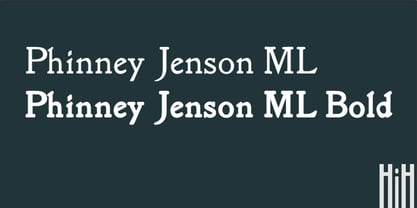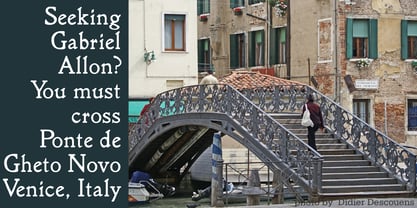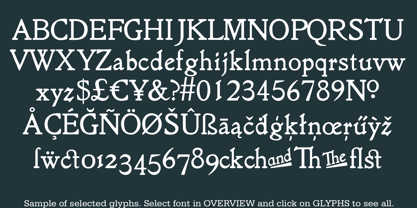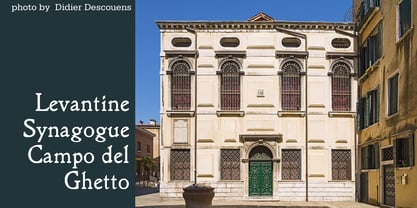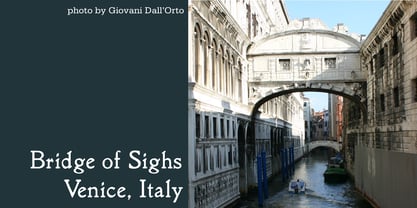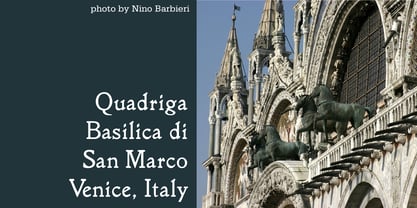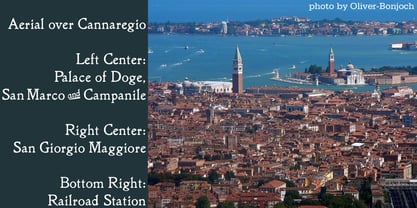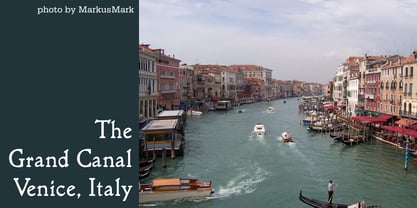A propos de HiH
HiH signifie Hand-in-Hand (main dans la main) parce que je ne pourrais pas le faire seule - rien de tout cela. Je m'intéresse autant à l'histoire qu'aux polices de caractères et je crois fermement qu'aucune police de caractères n'est une île. Je veux dire par là que chaque caractère a un contexte et une histoire et qu'il est le fruit de la créativité et des efforts d'une ou de plusieurs personnes. Les alphabets ayant pour but la communication écrite, une police de caractères ne peut pas être TOTALEMENT originale, sinon elle ne servirait à rien. Une police de caractères doit, au minimum, ressembler à d'autres polices de caractères qui existent déjà. Si un lecteur ne peut reconnaître aucune des formes de lettres, il ne pourra lire aucun des mots formés par ces lettres et il n'y aura pas de communication.
Au fil du temps, j'ai développé une aversion croissante pour la pratique, qui remonte aux premières fonderies, consistant à copier et à renommer polices sans attribution, comme si chaque ressemblance avec police était le produit d'un effort original et indépendant. J'ai trouvé cela déroutant et frustrant, et j'ai donc commencé à redonner le nom original à certains des polices que j'avais accumulés. Suivante Ensuite, j'ai commencé à être insatisfait des polices qui manquaient de ponctuation ou de caractères spéciaux qui faisaient (ou auraient dû faire) partie de la conception originale, etc. J'ai commencé à les ajouter au fur et à mesure de mes besoins. J'ai commencé à les ajouter au fur et à mesure que j'en avais besoin. Je me suis ensuite retrouvé à redessiner certains caractères non alphabétiques. Je pense que tous les caractères devraient avoir l'air d'appartenir au site police et non d'être jetés à la poubelle. Par exemple, je pense qu'une police de caractères en lettres noires devrait avoir un point qui reflète les mêmes caractéristiques de stylo à bille que les formes de lettres. Qui dessine des cercles parfaits avec une plume de stylo à bille ? D'un autre côté, pourquoi voudrait-on des symboles mathématiques avec une écriture en cuivre ? C'est comme les petites capitales de la lettre noire ou une version en swash d'un sans-serif géométrique. Vous voyez ce que je veux dire.
Et puis il y a toutes les superbes polices de caractères victoriennes et Art nouveau que je n'ai pas pu trouver sous forme numérique. Personnellement, je pense que le XIXe siècle (plus exactement, de 1815 à 1914) est le plus passionnant dans l'histoire de la typographie - les années d'adolescence, désordonnées, conflictuelles et pleines de la découverte de la puissance brute qui se libère. Il n'y avait pas d'échappatoire. Je devais faire les miens. J'espère qu'ils vous plairont et qu'ils vous seront utiles.
- Tom the Boxer, HiH Retrofonts
Jeux de caractères
Nous utilisons un jeu de caractères Windows 3.1 standard avec 213 caractères visibles ou glyphs et 256 emplacements de caractères au total (certains réservés aux fonctions du programme et non visibles) pour les caractères d'affichage. Nous pensons que l'Unicode est vraiment excellent pour les faces de texte, mais qu'il est souvent excessif à des fins d'affichage. Nous utilisons Fontographer 4.1 et aimons voir l'ensemble du jeu de caractères affiché sur un seul écran - ce qui n'est pas possible avec Unicode.
Nous nous écartons souvent du jeu de caractères ASCII standard, qui, à notre avis, comporte des choix stupides. Ne nous cherchez pas de "non logique". Pour les marques diacritiques (accents), nous incluons généralement l'accent aigu ('), l'accent grave (`), le tréma ou umlaut (¨), l'accent circonflexe (ˆ), le tilde (˜), la cédille (¸) et le macron (¯). La plupart de nos polices sont des reprises. La priorité est donnée aux accents et aux caractères spéciaux nécessaires pour définir la langue maternelle du créateur original. Bringhurst recense 59 formes de lettres dans les seuls alphabets romains ou latins (sans compter le cyrillique, le grec, l'hébreu, etc.). Par exemple, il existe quatre O : le O standard, le O barré, le O corné et le O ouvert. Si l'on ajoute les différentes combinaisons d'accents, de O-acute for à open-O-ogonek, on obtient un total de quarante variations sur la seule lettre O. Le vieux dicton selon lequel on ne peut pas tout faire pour tout le monde s'applique manifestement ici.
Note : pour la monarchie austro-hongroise, les langues administratives officielles étaient l'allemand et le hongrois. Si le tchèque, le polonais, le serbo-croate et le slovène étaient importants au niveau régional, le fait qu'ils n'aient pas de statut officiel constituait un problème politique majeur. (À certaines périodes, leur utilisation a même été interdite).
Nous essayons d'inclure les ligatures et les caractères alternatifs qui faisaient partie de la conception originale. Nous incluons également des caractères spéciaux ou des dingbats lorsque nous le jugeons approprié. Les livres de spécimens regorgent d'ornements d'imprimerie. Nombre d'entre eux ont déjà été numérisés sous forme de trames par Dover et d'autres et sont disponibles sous forme de collections bon marché sur CD.
Initiales décoratives
En règle générale, j'essaie de faire correspondre les initiales décoratives avec les petites capitales appropriées, si elles sont disponibles, ou avec une minuscule assortie ou harmonieuse. Si les minuscules ou les petites capitales sont pourvues d'accents, les initiales décoratives ne le sont pas, à l'exception parfois du C-cédille et du N-tilde. D'après
Le manuel de style de ChicagoLe français, le portugais et l'espagnol peuvent être définis sans accents sur les voyelles capitales ; l'allemand peut être défini en utilisant Ae, Oe et Ue à la place des capitales tréma. L'italien varie : les accents sont requis pour les titres affichés, mais pas pour le texte. Æ et Œ ne seront généralement pas inclus sous forme décorée, sauf s'ils font partie de la conception originale.
Bibliographie sélective
Les livres énumérés ci-dessous sont ceux auxquels nous nous référons le plus souvent. Chacun de ces ouvrages a quelque chose d'unique à offrir. Ensemble, ils peuvent constituer le noyau d'une bibliothèque typographique utile. Aucun spécimen de livre n'est mentionné, car les ouvrages les plus importants dépassent de loin les moyens de la plupart des gens, puisqu'ils coûtent des milliers de dollars. Nous espérons que les détenteurs des principales bibliothèques historiques, telles que l'université Columbia à New York et St. Bride's à Londres, numériseront progressivement les ouvrages les plus importants et les afficheront sur leurs sites web. Des dons pourraient les encourager à le faire, mais il s'agirait d'un processus coûteux en temps et en argent.
- Annenberg, TYPE FOUNDRIES OF AMERICA AND THEIR CATALOGS (Oak Knoll Press, New Castle, Deleware, 1994) ISBN 1-884718-06-X. Le but de ce livre, et de ceux qui lui ressemblent, est de capturer l'histoire de la typographie métallique avant qu'il ne soit trop tard. Ce sont des travaux d'amour et nous sommes redevables à ceux qui ont fait des efforts car cette histoire nous appartient à tous.
- Bain & Shaw, BLACKLETTER : TYPE AND NATIONAL IDENTITY. (Princeton Architectural Press, NYC 1998) ISBN 1-56898-125-2. Contribution utile à la compréhension de l'esprit du temps de la lettre noire, contrebalançant les nombreux commentaires négatifs improductifs formulés par les lecteurs qui ne connaissent que les formes de lettres romaines. Le fraktur, en particulier, peut être difficile à comprendre quand on n'y est pas habitué, mais il fonctionne mieux avec l'allemand qu'avec l'anglais. Jetez maintenant un coup d'œil au birman. Chapitre sur ce que les éditeurs appellent les "caractères hybrides allemands" : Behrens, Eckmann, Künstler, etc.
- Bringhurst, THE ELEMENTS OF TYPOGRAPHIC STYLE (Hartley & Marks, Vancouver [près du lieu de résidence de l'auteur] 2004. ISBN 0-88179-206-3 (pbk). Ouvrage incomparable et indispensable sur la mise en page et la typographie disciplinées, avec une forte perspective historique. Bringhurst est un grand critique de la typographie paroissiale.
- Gray, NINETEENTH CENTURY ORNAMENTED TYPEFACES (University of California Press, Berkeley & LA 1976) ISBN 0-520-03074-5 Épuisé. Trouvez-le d'occasion et achetez-le. Estimé à 40 $. Publié à l'origine par Oxford University Press en 1938.
- Jasper, Berry & Johnson, ENCYCLOPAEDIA OF TYPEFACES, 4e édition (Cassell & Co., Londres 2001) ; ISBN 1-84188-139-2 (pbk). Remarque : les éditions antérieures peuvent également être acquises sur le marché des livres d'occasion.
- Lewis, TYPOGRAPHY DESIGN AND PRACTICE (Taplinger Publishing, NYC 1978) ISBN 0-8008-7922-8 (pbk). Discussion utile sur les développements artistiques qui ont eu un impact sur la typographie d'affichage à partir de 1800. Etablit un lien perspicace entre les caractères de la lettre noire et les caractères sans empattement.
- McGrew, AMERICAN METAL TYPEFACES OF THE TWENTIETH CENTURY, 2e édition (Oak Knoll Books, New Castle, Delaware 1993) ; ISBN 0938768-39-5 (pbk). Inclut des caractères du XIXe siècle qui ont continué à être moulés au XXe siècle, comme le Pekin.
- Petzendorfer, TREASURY OF AUTHENTIC ART NOUVEAU ALPHABETS, DECORATIVE INITIALS, MONOGRAMS, FRAMES AND ORNAMENTS (Dover Publications, New York 1984) ; publié à l'origine par Julius Hoffmann de Stuttgart en 1903 sous le titre SCHRIFTENATLAS NEUE FOLGE : EINE SAMMLUNG VON ALPHABETEN INITIALEN UND MONOGRAMMEN ZUSAMMENGESTELLT VON HOFRAT L. PETZENDORFER. ISBN 0-486-24653-1 (pbk).
- Solo, THE SOLOTYPE CATALOG OF 4,147 DISPLAY TYPEFACES (Dover Publications, New York 1992) ISBN 0-486-27169-2 (pbk). Comme le titre l'indique, ce livre a été conçu comme un catalogue commercial et non comme un document historique. En raison de la pratique consistant à renommer les caractères à cette fin et de l'absence d'informations supplémentaires sur l'endroit où les caractères ont été collectés, le livre est moins utile qu'il n'aurait pu l'être. Il serait merveilleux qu'une base de données soit compilée. De nombreux caractères sont tout simplement introuvables ailleurs.
- The University of Chicago Press, THE CHICAGO MANUAL OF STYLE, 14e édition (The University of Chicago Press, Chicago & London 1993) ISBN 0-226-10389-7. La quinzième édition est maintenant disponible. Probablement la meilleure source de référence pour les détails pratiques de la typographie appliquée.
En savoir plus
Lire moins
